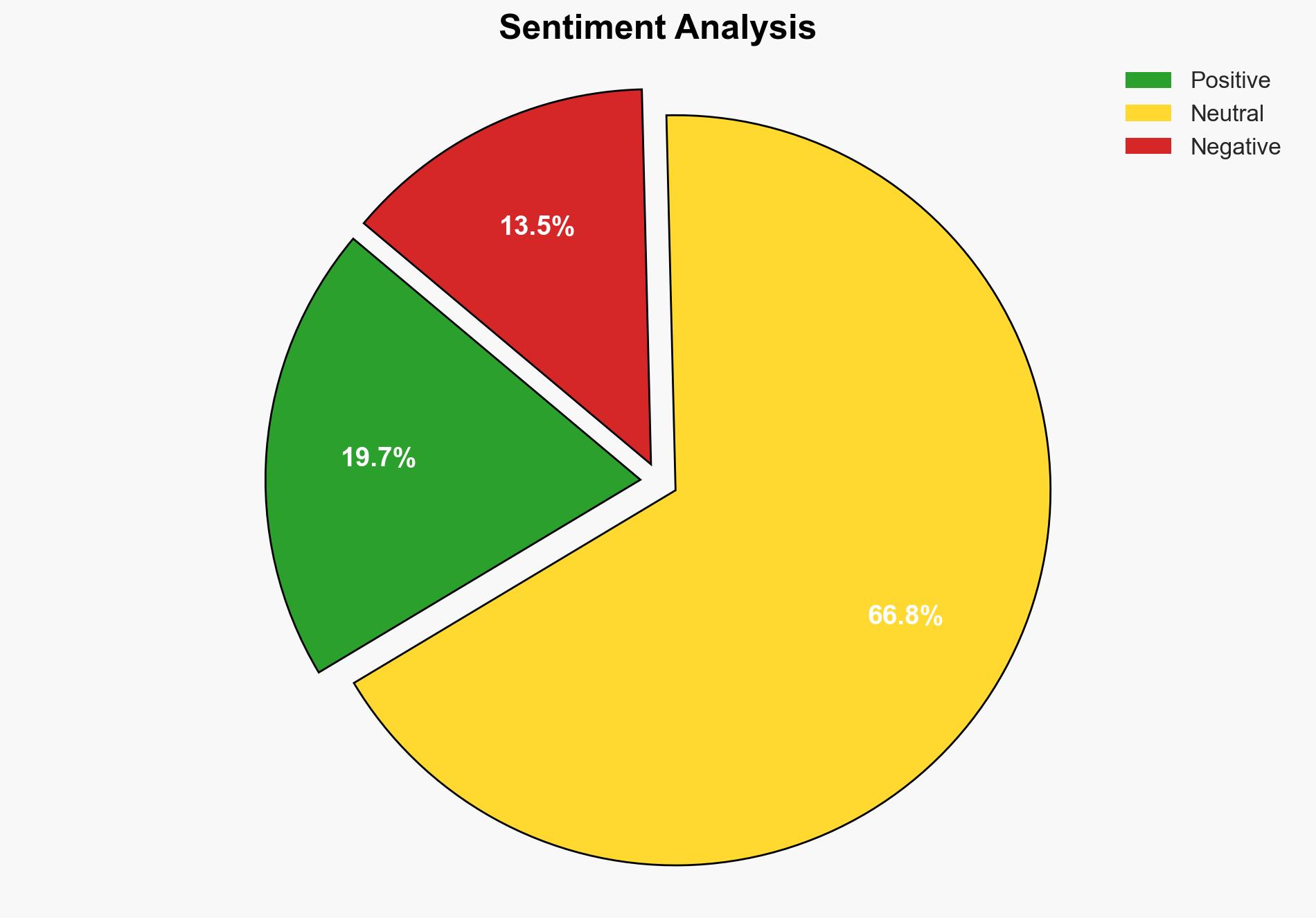5 Unexpected Devices You Didnt Know Could Spread Malware – HackRead
Published on: 2025-03-24
Intelligence Report: 5 Unexpected Devices You Didn’t Know Could Spread Malware – HackRead
1. BLUF (Bottom Line Up Front)
Recent research highlights unconventional devices as potential vectors for malware dissemination. Devices such as headphones, smart light bulbs, barcode scanners, smart coffee makers, and traffic lights have been identified as potential cybersecurity threats. The exploitation of these devices could lead to significant breaches in personal and organizational security. Immediate action is recommended to update security protocols and device firmware to mitigate risks.
2. Detailed Analysis
The following structured analytic techniques have been applied for this analysis:
General Analysis
The analysis reveals that seemingly innocuous devices can be weaponized to spread malware. Headphones can transmit data via sound waves, while smart light bulbs can be compromised to infiltrate networks. Barcode scanners may arrive pre-infected from manufacturers, and smart coffee makers can serve as gateways to home networks. Traffic lights, essential for urban management, are vulnerable to cyberattacks that can disrupt city infrastructure.
3. Implications and Strategic Risks
The exploitation of these devices poses significant risks to national security, regional stability, and economic interests. The potential for supply chain attacks, network infiltration, and infrastructure disruption is high. The sophistication of these attacks suggests a growing trend in targeting everyday devices, increasing the complexity of cybersecurity defense mechanisms.
4. Recommendations and Outlook
Recommendations:
- Regularly update firmware and security patches for all connected devices.
- Implement network segmentation to isolate IoT devices from primary networks.
- Conduct comprehensive security audits and vulnerability assessments.
- Develop regulatory frameworks to ensure manufacturers adhere to cybersecurity standards.
Outlook:
In the best-case scenario, increased awareness and proactive measures will mitigate the risks associated with these devices. In the worst-case scenario, failure to address these vulnerabilities could lead to widespread disruptions and data breaches. The most likely outcome involves a gradual improvement in security practices as awareness grows and technology evolves.
5. Key Individuals and Entities
The report references research conducted by unnamed individuals demonstrating the vulnerabilities of these devices. Notable entities include manufacturers of smart devices and cybersecurity researchers who have highlighted these risks. The focus remains on the technological and security implications rather than specific individuals.




